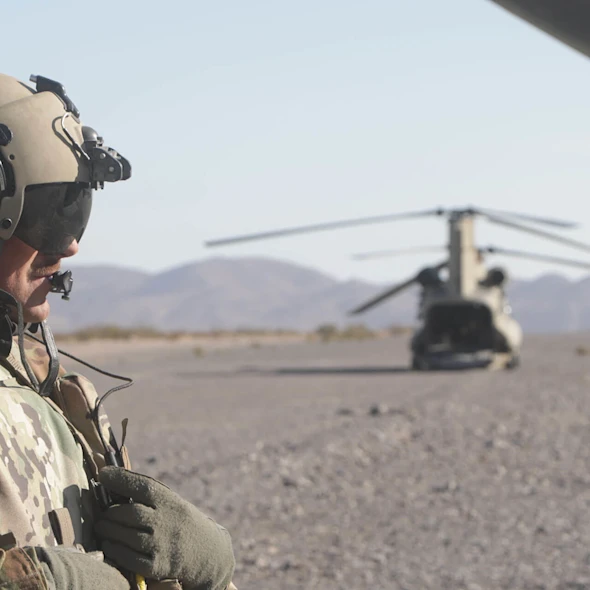While 5G and “next G” is currently getting a lot of attention in the commercial space, it’s been a top DoD priority for several years. Why? Because along with aircover, secure and reliable signal and communications are critical for warfighters. Yet today, NATO partners and even each of the different services often use different networks and devices that are not interoperable to communicate. This is the impetus for the DoD’s JADC2 initiative, which consolidates signal communications among joint forces and makes everything more interoperable.
JADC2 and 5G Complement
JADC2 is a replacement for the constellation of legacy purpose-built tools that add additional complexity and – from a cybersecurity perspective – unintentionally broaden the threat landscape on which our adversaries will look to attack. But the signal issue is not unique to the Defense arena. Managing spectrum traffic and devices is a critical way to minimize potential interference amid legacy radio usage within the aerospace, telecom, and healthcare industries.
As a DoD example, current radios provide limited support for controlling devices traveling at hypersonic speed. The U.S. doesn’t have operational hypersonic missiles yet, but it’s a top priority. According to the Government Accountability Office, funding for hypersonic research increased by 740% between 2015 and 2020. The 2022 defense budget alone increased funding by 20%.
Managing and intercepting hypersonic devices will require the ultra-low latency 5G provides. This is a must have for manned and unmanned teaming (MUMT), which pairs manned and unmanned autonomous devices for enhanced mission delivery. Connecting operators, drones, and other vehicles all with 5G’s high-band, near-zero latency capability, along with operating on and through existing commercial networks in partner nations, would be a competitive advantage against peer and near peer adversaries . It would also form the underlying infrastructure for enabling JADC2 and coordinating with NATO and partner nations.
An analog to this, no pun intended, would be to consider American troops in Europe in World War II. They didn’t rebuild roads to trek across Europe. They used what was there and built new roads or rebuilt bombed-out bridges when they needed to. The same applies here.
5G Drives Security
Additionally, GPS and satellite-based communications are increasingly vulnerable to new threats from space junk to rouge nation missiles. If satellite-based time and location information is jeopardized it can potentially put missions and, more importantly, warfighters at risk. 5G can be an important and life-saving alternative.
5G has the ability to support faster, near-real-time decision making within the DoD enterprise facilitating JADC2 allowing relevant information to be shared from in garrison to the tactical edge and back. It can link multiple systems together and promote real-time information sharing, enhancing communications across the board.
“The military needs 5G and high bandwidth to support new and emerging threats and use cases from increasingly sophisticated near-peer and rogue state adversaries. ”
To be sure, a 5G future for the DoD requires navigating technical complexities like spectrum sharing, radio frequency masking and electronic warfare concerns in addition to infrastructure sharing and virtualization of networks and cellular cores. But the benefits outweigh the challenges and moving to the first truly global and international wireless standard is important not only for the enhanced capabilities but also for the cost savings of using commercially available components vs. often decades old legacy equipment.
GDIT Helps Customers Plan for a 5G Future
Today, GDIT is helping customers plan for the impending 5G future. As an example, we’re implementing our 5G flight line of the future solution for the U.S. Air Force as part of its Base Information Transport Infrastructure (BITI) Reset program at McConnell Air Force Base in Wichita, Kansas. In 2022 mechanics and technicians will use 5G connectivity to facilitate repair and maintenance in the hanger and across the airfield. The base’s WiFi 6 and 5G network provide coverage for flight crews and other staff on the ground who use tablets to manage flight line operations, ramps, parking locations, hangars, maintenance facilities and more. This infrastructure will enable future 5G-connected aircraft sensors to automate and manage aircraft support, maintenance and supply chain logistics as well as connect augmented reality devices for enhanced guidance for technicians.
We’re also members of the Joint Base San Antonio 5G working group and have established the GDIT Emerge Lab at our headquarters in Falls Church, VA where we operate a 5G environment for testing and demonstrations of various technology. The lab is one way we support our customers by convening and training skilled talent, assessing emerging 5G solutions, and working with partners to innovate and rapidly develop new ones. Additionally, we work with market leaders across the 5G industry who rely on feedback from our Emerge lab and our customer sites to improve their technology, better serve customers, and advance the mission.






